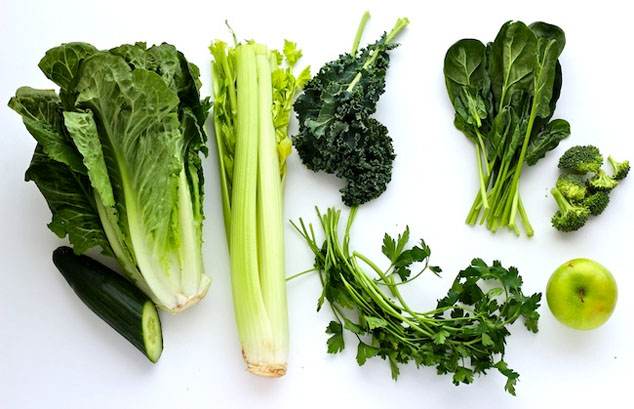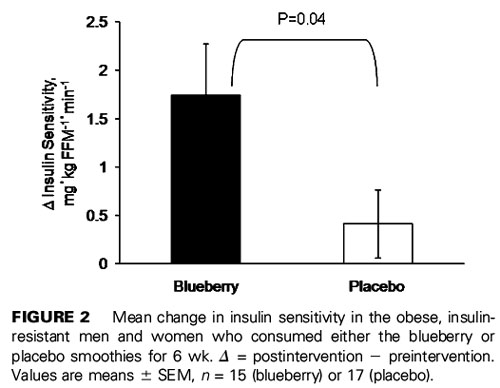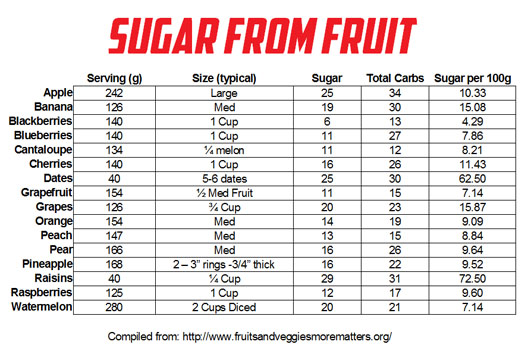 Is a daily green smoothie all that good for you? Maybe. It depends on the recipe, of course, plus several other factors. Books such as ‘The Simple Green Smoothie Solution’ provide wonderful food for thought. Such books are way overpriced, though. Some recommendations from free sources of information across the Web are pretty good and some are not. Here is what you should know to get the most out of your green smoothies.
Is a daily green smoothie all that good for you? Maybe. It depends on the recipe, of course, plus several other factors. Books such as ‘The Simple Green Smoothie Solution’ provide wonderful food for thought. Such books are way overpriced, though. Some recommendations from free sources of information across the Web are pretty good and some are not. Here is what you should know to get the most out of your green smoothies.
I advocate the consumption of green smoothies. The main purpose of this article is just to help you think more critically about them, especially when different sources offer contradictory recommendations.
The Simple Green Smoothie Solution
Jadah Sellner and Jen Howard, authors of ‘The Simple Green Smoothie Solution’, are to be commended for creating a huge stir around green smoothies. Everyone has probably heard about green smoothies by now, and many folks have made a regular habit of making their own. Green smoothies are nothing new.
The main reason for this post is to direct you to good information that doesn’t cost anything. At the very least, certainly don’t fall for the ads that I’ve seen for the Sellner-Howard book, asking for only $39.95. You can get this same book, like I did, on Amazon, new for $9.98. It really isn’t even worth that much, though.
By the way, if you search at Amazon for books on ‘green smoothies’, you will get a list of more than 1200 results. This just goes to show you how popular this topic is. Fortunately for you, plenty of blogs and other websites provide lots of advice for free.
The key, as always, is to figure out which advice is the best, especially when different sources contradict one another.
General health advice is hard to argue, and most of what you will find seems rational. Of course, green smoothies are a way to get more fruits and vegetables into your diet. In fact, drinking finely blended plant material is an improvement over eating it whole and raw. The main reason is that blending effectively destroys more cell walls than you can by chewing. The result is that you actually get more out of the plant cells from smoothies than you can by eating raw plant material.
Of course, cooking can do the same. The issue with cooking is whether it destroys any beneficial ingredients. Broccoli is a good example of a veggie that is almost useless raw or overcooked. It has to be cooked just right to get the optimum amount of glucosinolates (e.g., sulphorophane) out of the cells without destroying their biological activity.
How About Smoothie Research?
Ideally, we would like to see some research in support of the green smoothie revolution, right? The nearly breathless subtitles in Chapter 3 of the Sellner-Howard book, for example, cry out for scientific support, regardless of how good or how rational they sound. First, let’s take a look a few of the more exciting health benefits in these subtitles:
- Reverse Aging – Look And Feel Young Again! And Stay That Way!
- Decrease Or Eliminate Your Risk Of Cancer!
- Protect Your Heart!
- Turbo-Charge Your Immune System*
- Boost Your Energy And Improve Your Mental Alertness
- Easily Increase Your Fiber Intake
- Prevent, Manage, Or Even Reverse High Blood Sugar And Diabetes!
- Shed Unwanted Pounds And Lose Weight Naturally*
*Curiously, these subtitles were the only ones without exclamation points.
Now let’s see what PubMed, our national medical research database has to offer on smoothies for health.
In a search on ‘smoothie’ as the keyword, PubMed lists 31 articles at this time. Several have to do with tooth enamel erosion, since this is a big worry with commercial products that are called smoothies. Several other articles entail research on similar commercial smoothies. These articles are irrelevant to those of us who want to make our own smoothies.
The only three articles that come close to evaluating the health benefits of homemade smoothies, as follows:
1) Colonic availability of polyphenols and D-(-)-quinic acid after apple smoothie consumption. Mol Nutr Food Res. 2011 Mar;55(3):368-77.
The main conclusion of this article, as stated in the abstract is: These results suggest that the food matrix might affect the colonic availability of polyphenols, and apple smoothies could be more effective in the prevention of chronic colon diseases than both cloudy apple juice and apple cider.
2) Effect of New Zealand blueberry consumption on recovery from eccentric exercise-induced muscle damage. J Int Soc Sports Nutr. 2012 Jul 11;9(1):19.
Now we are getting somewhere. The article concludes: This study demonstrates that the ingestion of a blueberry smoothie prior to and after EIMD [exercise-induced muscle damage] accelerates recovery of muscle peak isometric strength. This effect, although independent of the beverage’s inherent antioxidant capacity, appears to involve an up-regulation of adaptive processes, i.e. endogenous antioxidant processes, activated by the combined actions of the eccentric exercise and blueberry consumption. These findings may benefit the sporting community who should consider dietary interventions that specifically target health and performance adaptation.
3) Bioactives in blueberries improve insulin sensitivity in obese, insulin-resistant men and women. J Nutr. 2010 Oct;140(10):1764-8.
Aha! Now we are getting somewhere! This study provided daily smoothies to two groups of people for 6 weeks. One group got smoothies that included ‘bioactives’ from the equivalent of about 2 cups of blueberries and the other group got smoothies without blueberries. Here is what they found: Insulin sensitivity was enhanced in the blueberry group at the end of the study without significant changes in adiposity, energy intake, and inflammatory biomarkers. In conclusion, daily dietary supplementation with bioactives from whole blueberries improved insulin sensitivity in obese, nondiabetic, and insulin-resistant participants.
This is outstanding! If a picture is worth a thousand words, this is the graph that highlights the most important result of this study:

That’s pretty good, isn’t it?
If that is all we knew for sure, it would certainly be good enough incentive to consume smoothies that contain blueberries. Unfortunately, that is just about all that we know for sure.
Yes, I agree that many other health benefits probably accrue from consuming green smoothies. If anything, daily smoothies at least boost your consumption of fruits and vegetables.
Two Caveats
You will find that two main issues often crop up when you bounce around different websites that recommend green smoothies. These are:
1) How Much Fruit?
Fruit smoothies contain too much sugar, that’s for sure. That junk that you get at smoothie shops is typical. What is best for making your own smoothies? Different advocates recommend various proportions of greens to fruits, anywhere from all greens to half greens/half fruits.
How about the research on this issue? Completely lacking.
It all depends on the type of fruit. Blueberries are great, as we can see from the research cited above. The combination of ingredients in fruits is a good indicator of which fruits to include, beginning with sugar content. Here is a brief guide from one source:

The ideal fruit should offer low sugar content, high nutrient content (antioxidants, etc.), and some fiber. It sure isn’t simple, is it? All things considered, blueberries and watermelon are at the top of my list.
The main point is: Above all else, keep the sugar content down.
2) Adding Oil
The logic behind the advice to add oil to your smoothies is that it will enhance the bioavailability of oil-soluble/fat-soluble nutrients from the plant material. This is, again, a reasonable suggestion.
How about the research on this issue? Almost completely lacking.
On the scale of solubility, beta-carotene and vitamin E are examples of nutrients that are known to be more bioavailable when consumed with fats and oils. This observation would probably extend to many other oil-soluble/fat-soluble nutrients, too. They include vitamins A, D, and K. Many antioxidant phytonutrients are also more oil-soluble than they are water-soluble.
The benefit of adding oils to smoothies is that certain oils have health benefits of their own. Fish oils, flax oil, and coconut oil are the best and most cost-effective. You can get a wonderful dose of omega-3 oils from just a couple of teaspoons of the right fish oil. This is the simplest way to reap the benefits of DHA without having to take any large fish oil capsules.
My choice is to alternate days with fish oil vs. days with coconut oil in my smoothies. The health benefits of coconut oil are becoming more well-known, in spite of fear-mongering by thoughtless medical folks about this excellent mixture.
If you are adding oil to your smoothie, which seems to be the best way to boost its value, be absolutely sure to avoid any of the common vegetable oils on the market. They are bad in so many ways that it is best to just avoid them.
Making Smoothies Easily – A Hint
Frozen ingredients are the easiest to blend into a fine consistency. Frozen foods in general are easier for blending because they are so brittle.
My two favorite greens are spinach and kale. Frozen chopped spinach, with no additive of any kind, is easy to find in the frozen food section of your supermarket. As for kale, buy fresh baby kale and stick it in the freezer.
I have successfully frozen beets that I cut up fresh.
Freeze fresh blueberries when they are in season. Otherwise just get frozen blueberries. They are always easy easy to find.
What about the best combinations?
Once I got past the notion that I had to measure everything precisely, I simply grabbed ingredients in what looked to be the right amounts. This means about 1-2 cups of spinach, 1-2 cups of kale, a cup of blueberries, 2 tablespoons of oil, and 16 ounces of water. I may also substitute a cup of frozen beets, which I cut up fresh and stash in the freezer, for a portion of either the spinach or the kale.
None of these are what you would call gourmet flavors. They all taste like extract of lawn, with a hint of blueberries or beets or maybe a banana now and again. Sometimes I add sea salt, which provides a small improvement. Sometimes I add a few drops of flavored Stevia.
Generally I like these things, although my wife mostly does not. I encourage you to simply experiment a bit until you hit on a few combinations that tickle your fancy…and that are probably very good for your health, too!
There, now that was a simple set of recommendations, with a little dose of science. And it didn’t cost you anything except your time to read this post. What a deal!
A new green smoothie aficionado,
Dr. D
You are a doll. Thanks so much for caring enough to trouble yourself to share your nutritional information. You are a blessing to many!!!
Wow…now THAT made my day! Thank you so much for your kind comments.
All the best,
Dennis
Thank you so much for good information about smoothies!
Thank you for the info. I always learn something from
your input…then know there are various opinions “out
there”… the idea of slightly frozen greens (kale) makes
it simple for the juicing.., blending etc. Thank you.